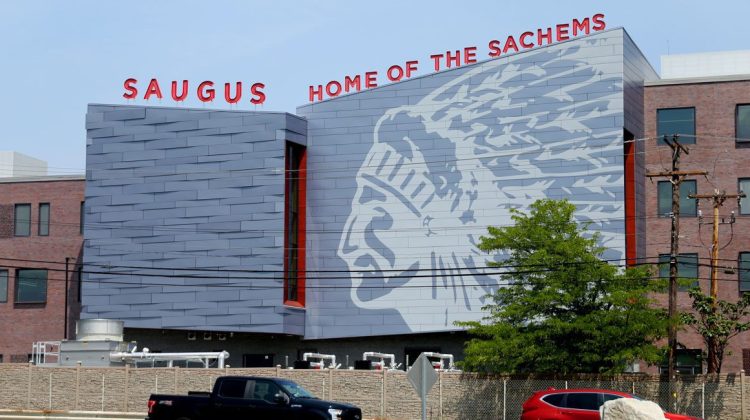SAUGUS – The debate is on. And its subject is something very near and dear to Saugonians throughout the town.
What’s at stake is the future use of the longtime Saugus Sachem as the mascot for the town and its athletic teams. The symbol is butting heads with the state’s initiative to prohibit the use of Native American mascots by public schools in Massachusetts.
“I think it’s not for the state legislature to make such decisions,” said Select Woman Corinne Riley. “It should be for the towns like us, who have those mascots.”
While Riley said the Sachem symbol appearing on the town seal, street signs, and on the sides of the new middle/high school, pays homage to the people who used to live in the area. Supporters of the legislation consider Native American symbols to be the signs of oppression and perpetuated historical trauma.
The question is what were Sachems and what did the term mean in the town’s history?
Richard Lavoie, a history teacher at Saugus High for 20 years, said he had heard a rumor of a local Native American man in Wakefield who designed the mascots for both Saugus and Wakefield.
“As a historian I needed more solid, written evidence,” said Lavoie.
Lavoie then went on studying the school yearbooks, and he found out that the current mascot name began to be used informally in the earliest period of the school history around 1920s-1940s, but at that time it was not a stable name.
“My guess is that in the 1920s-1940s the name was used intermittently and informally,” said Lavoie.
He concluded that “Sachem” was a passive nickname that eventually became adopted around the 1950s. Lavoie did not have a chance to check in with Saugus Public Library, but Mary O’Connell, head of reference at the library, found a research paper that a graduate of Saugus High School of 1929, Tom Weddle, wrote out of curiosity.
Weddle wanted to find out where the title of Saugus school yearbooks – “The Tontoquonian”, came from. He then gave his research to the local library as a gift in 2002.
Weddle found out that Tontoquon was a real Indian Chief born between 1650 and 1660. While there is little known about his parents, his grandfather Wenepoykin (who went by many names, among them Sagamore George, George Rumney Marsh and Winnepurkett).
Wenepoykin was a younger brother of Sagamore James, who is depicted on the town seal. Wenepoykin first lived in Salem (Naumkeag), but after both his brothers died of smallpox in the epidemic of 1633, and his mother died a few years later, he became the Sagamore — or Sachem — for the region in 1650.
When King Philip’s War began in 1675, Sagamore George supported the fight against the English, and after the defeat he was sold to slavery, but managed to return home. Even less is known of his grandson Tontoquon.
“There is little in the historic record that leads one to believe that Tontoquon was singularly important to the town of Saugus,” wrote Weddle.
However, Tontoquon’s name might be associated with local lore. Weddle wrote that retired Saugus high school teacher John Burns had found a poem “The Legend of Tontoquon” by Benjamin Newhall, brother of the co-author of the History of Lynn. In that poem Tontoquon was represented as a strong leader and a “messenger of peace.”
Newhall’s daughter suggested the name “Tontoquon” for the local chapter of organization “Order of the Eastern Star”, and according to the Saugus Directory 1913-1914, the the chapter was established in 1905, and that might have paved the way for the name to be later used for other organizations.
“Like everything, Saugus’ use of the Sachem symbol has been imperfect,” said Riley.
“Let’s discuss how we might improve our town and team symbols with accurate and respectful references, but the homage from Saugus is genuine.”
Oksana Kotkina can be reached at [email protected].

